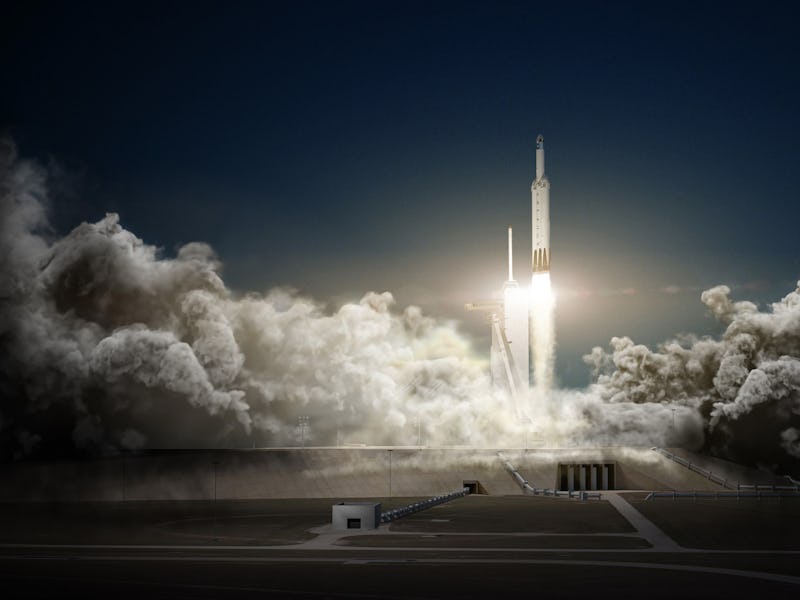SpaceX will launch a pair of private citizens into space for an orbital flight around the moon in late 2018, the company announced Monday. The launch will involve the Falcon Heavy rocket system, which will be the world’s most powerful rocket by the time of its first flight test this summer.
Humans have not been to the moon since 1972, but the logistics of such a mission are certainly not beyond current technology and engineering. Moreover, the SpaceX mission will simply circumnavigate the moon and return directly to Earth afterward.
The two-person crew will fly to the moon aboard SpaceX’s Crew Dragon (or Dragon 2) capsule — the first iteration of Dragon designed to carry people into space. Dragon 2, in spite of several delays, is a key part of NASA’s Commercial Crew Program — in which the agency will contract private companies (SpaceX and Boeing so far) to send NASA astronauts to the International Space Station. After an uncrewed test mission to the ISS later this year, SpaceX and NASA will send a crew aboard Dragon 2 to the ISS sometime in mid-2018.
Which means the Dragon 2 lunar mission will occur hot off the heels of SpaceX’s first human mission into space.
Dragon 2
The plan, as of now, calls for Dragon 2 to launch from Kennedy Space Center’s launch pad 39A — the historic site that which saw the liftoff of the Apollo missions. This fact is certainly not lost on the company.
The similarities to the Apollo missions don’t end there. While details on the launch are still slim, Musk told reporters on Monday the trip will last about one week. Passengers will basically cover a 300,000 to 400,000-mile distance as the spacecraft loops around the moon and heads back.
It should be awfully similar to the circumlunar Apollo 8 mission (the second crewed mission in the Apollo program, and the first to reach the moon’s orbit) and Apollo 13 (the aborted lunar landing mission in which a circumlunar flight was used to help slingshot the crew and its damaged spacecraft back to Earth).
There’s no doubt the mission will be extremely useful in testing out the Dragon architecture for deep space missions in the future — especially in the context of flying to Mars later on. For now, however, it’s still unclear what the specific mission will entail. The company has over a year to provide some more color on this surprise endeavor.
